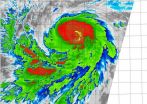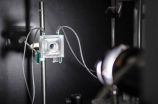(Press-News.org) London, UK - 29 Aug 2015: New ESC Guidelines on pericardial diseases are published today. Until now there was insufficient evidence for strong recommendations in this group of conditions which can severely restrict quality of life.
"Pericardial diseases include different clinical presentations and various aetiologies that require appropriate management," said Professor Yehuda Adler, Co-Chairperson of the guidelines Task Force. "We hope these new recommendations will help clinicians to manage these diseases with resulting improvements in outcomes and quality of life."
The 2015 ESC Guidelines on the diagnosis and management of pericardial diseases are published online in European Heart Journal1 and on the ESC Website.2 Previous ESC Guidelines on this topic were published in 2004.3
The pericardium (meaning "around" and "heart") is a double-walled sac containing the heart and the roots of the great vessels. It provides lubrication and protection from infection. Pericardial diseases may be isolated or part of a systemic disease. The main pericardial syndromes are pericarditis, pericardial effusion, cardiac tamponade, constrictive pericarditis and pericardial masses. Medical therapies for this group of diseases are off-label since no drug has been registered for a specific pericardial indication.
Pericarditis accounts for about 5% of emergency room admissions for chest pain. The long-term prognosis is usually good but recurrences affect about 30% of patients and quality of life can be extremely limited with severe physical restrictions and dependence on glucocorticoids.
There have been major advances in therapy since 2004 with the publication of the first multicentre randomised clinical trials, especially on the use of colchicine (commonly used to treat gout). This drug is now recommended as first line therapy for acute pericarditis as adjunct to aspirin or NSAIDs and in patients with a first episode or recurrent acute pericarditis. "This treatment should improve patients' response to aspirin or NSAIDs, increase remission rates and reduce the recurrence of pericarditis," said Professor Philippe Charron, Task Force Co-Chairperson.
The guidelines recommend that pregnancy in women with recurrent pericarditis should be planned during a phase of disease quiescence. Specific recommendations are given on which medications to use during pregnancy (before and after 20 weeks), and after delivery during breastfeeding. For example, aspirin is the first choice before 20 weeks but should be avoided after 20 weeks and during breastfeeding. Colchicine is considered contraindicated, even though no adverse events during pregnancy have been reported in women with familial Mediterranean fever treated with colchicine during pregnancy and breastfeeding.
Also new are specific diagnostic criteria for acute pericarditis which is now identified when patients exhibit two of the following: pericarditic chest pain, pericardial rubs, new widespread ST elevation or PR depression on an ECG, or pericardial effusion (new or worsening). Recurrent pericarditis is defined as recurrence of pericarditis after a documented first episode of acute pericarditis and a symptom-free interval of at least four to six weeks.
Novel diagnostic strategies are introduced for the triage of patients with pericarditis and pericardial effusion. These allow the selection of high-risk patients for treatment and specify when and how additional diagnostic investigations should be performed. Multimodality imaging is now an essential part of diagnostic evaluation. Professor Adler said: "The combination of diagnostic criteria and strategies will help clinicians to clarify what condition a patient has and provide the most appropriate therapy."
Despite the emergence of a large amount of new data over the past ten years, further research is required in a number of areas including the pathophysiology and risk factors for recurrent pericarditis; how pericarditis can be prevented if colchicine is ineffective; and the aetiology, pathophysiology, and management of isolated pericardial effusion.
Professor Charron concluded: "The field of pericardial diseases has seen dramatic improvements since the previous guidelines were published. The first clinical trials have been performed and put management of these diseases on the road of evidence based medicine. Patients with pericardial diseases should now receive more accurate diagnosis and improved treatment."
INFORMATION:
London, UK - 29 Aug 2015: A novel treatment algorithm for pulmonary arterial hypertension is launched today in new pulmonary hypertension guidelines from the European Society of Cardiology (ESC) and European Respiratory Society (ERS). The protocol aims to give patients the best chance of a good clinical outcome in a condition with dismal prognosis which puts severe limitations on patient choices including avoiding pregnancy, excessive physical activity and certain types of travel.
The 2015 ESC/ERS Guidelines for the diagnosis and treatment of pulmonary hypertension are ...
London, UK - 29 Aug 2015: ESC Guidelines published today recommend DNA analysis as a fundamental component of post mortem assessment in young sudden death victims. Identification of a genetic cause helps to quickly diagnose and protect relatives.
The Guidelines are published online in European Heart Journal1 and on the ESC Website2 and are the European update to the 2006 European/American guidelines.3 They focus on preventing sudden cardiac death in patients with ventricular arrhythmias.
"For the first time these guidelines have incorporated the concept proposed by ...
Are some people immune to hangovers, and can eating or drinking water after heavy drinking prevent a hangover? The answers appear to be 'no' and 'no' according to new research presented the ECNP conference in Amsterdam.
Excessive alcohol consumption has familiar consequences, many of them quite damaging. If a person does not experience a hangover - and 25% to 30% of drinkers regularly claim this - they may be more likely to continue drinking, so good research into the outcomes of drinking to excess is needed.
A group of international researchers from the Netherlands ...
Tropical Storm Erika was centered in the Eastern Caribbean Sea and affecting Puerto Rico and Hispaniola when NASA's Terra satellite passed overhead mid-day on Friday, August 28, 2015. Two hours after Terra passed, NOAA's GOES-East satellite saw Erika's western side over the Dominican Republic.
At 15:05 UTC (11:05 a.m. EDT) the Moderate Resolution Imaging Spectroradiometer instrument aboard NASA's Terra satellite captured a visible light image Tropical Storm Erika approaching Hispaniola. Erika's center was in the eastern Caribbean Sea, and the northern quadrant of the ...
To understand how confidence in parenting may predict parenting behaviors in women who were abused as children, psychologists at the University of Rochester have found that mothers who experienced more types of maltreatment as children are more critical of their ability to parent successfully. Intervention programs for moms at-risk, therefore, should focus on bolstering mothers' self-confidence--not just teach parenting skills, the researchers said.
"We know that maltreated children can have really low self-esteem," said Louisa Michl, a doctoral student in the department ...
A simple change in the wording of a traffic sign - from "Share the Road" to "Bicycles May Use Full Lane" - could help clarify the rules of the road for bicyclists and motorists, according to a North Carolina State University study.
"'Share the Road' signs are common but what that means in terms of how drivers and bicycle riders should interact can be ambiguous," says George Hess, natural resources professor and co-author of the study in PLOS One. Some bicyclists complain that motorists consider them to be in the way, while some motorists accuse bicyclists of hogging ...
Consider the pendulum of a grandfather clock. If you forget to wind it, you will eventually find the pendulum at rest, unmoving. However, this simple observation is only valid at the level of classical physics--the laws and principles that appear to explain the physics of relatively large objects at human scale. However, quantum mechanics, the underlying physical rules that govern the fundamental behavior of matter and light at the atomic scale, state that nothing can quite be completely at rest.
For the first time, a team of Caltech researchers and collaborators has ...
Washington DC - August 28, 2015 - Oysters not only transmit human norovirus; they also serve as a major reservoir for these pathogens, according to research published August 28 in Applied and Environmental Microbiology, a journal of the American Society for Microbiology. "More than 80 percent of human norovirus genotypes were detected in oyster samples or oyster-related outbreaks," said corresponding author Yongjie Wang, PhD.
"The results highlight oysters' important role in the persistence of norovirus in the environment, and its transmission to humans, and they demonstrate ...
NASA-NOAA's Suomi NPP satellite flew over Hurricane Jimena in the Eastern Pacific and saw the strongest thunderstorms building up quickly, especially in the northern quadrant of the storm. Jimena intensified rapidly overnight on August 27 and early August 28 and the National Hurricane Center expects it to become a major hurricane.
The Visible Infrared Imaging Radiometer Suite or VIIRS instrument aboard the satellite provided infrared data of the storm that showed the coldest cloud top temperatures, which indicate the strongest thunderstorms were in Jimena's northern ...
Generating and storing renewable energy, such as solar or wind power, is a key barrier to a clean-energy economy. When the Joint Center for Artificial Photosynthesis (JCAP) was established at Caltech and its partnering institutions in 2010, the U.S. Department of Energy (DOE) Energy Innovation Hub had one main goal: a cost-effective method of producing fuels using only sunlight, water, and carbon dioxide, mimicking the natural process of photosynthesis in plants and storing energy in the form of chemical fuels for use on demand. Over the past five years, researchers at ...


